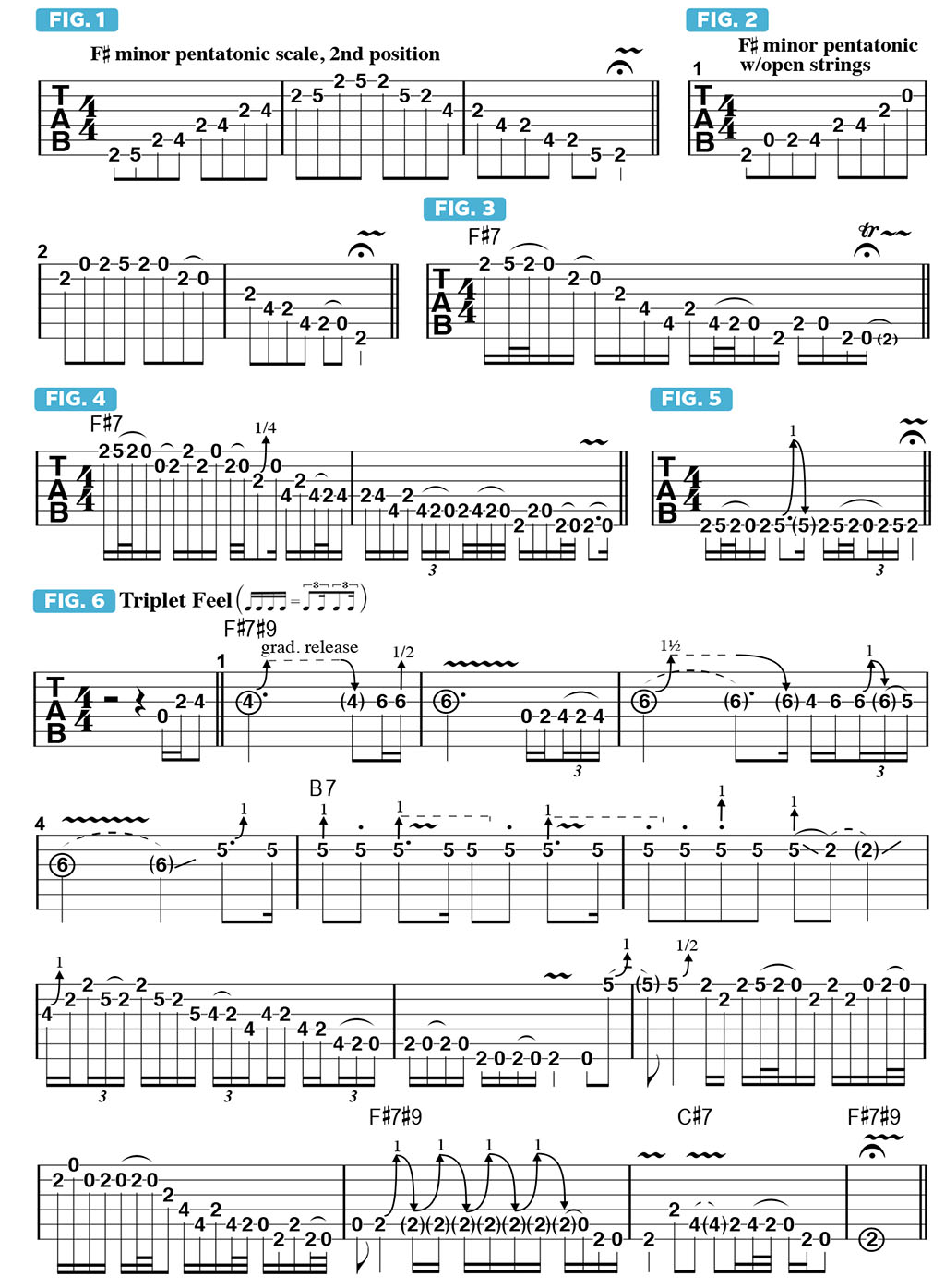Take your lead playing even further with these unusual string-bending techniques
Master these and make your guitar sing like the human voice
As mentioned last time, string bending is a highly expressive technique that creates a portamento sound, which is defined as "a pitch sliding seamlessly from one note to another.” On a fretless instrument, such as a violin, a portamento can be produced by sliding one’s finger along the length of the string.
On guitar, one can achieve a similar effect by bending a string. In both instances, the sound of moving seamlessly between notes emulates that of the human voice and offers the player a great range of emotional expression.
I’d now like to show you some cool ways to combine string bending with the use of open strings, with examples presented in the key of F#. Though not among the most commonly used keys in blues and rock, many guitarists have chosen it for its open-string benefits, such as Jimi Hendrix (Foxey Lady, In From the Storm, Highway Chile), Otis Rush (All Your Love [I Miss Lovin’]), Jeff Beck (Let Me Love You) and Frank Zappa (San Ber’dino [A major/F# minor]).
FIGURE 1 illustrates the F# minor pentatonic scale (F#, A, B, C#, E) played in 2nd position using all fretted notes. In the lower octave, the minor third, A, can be sounded with the open 5th string, and in the higher octave, the fourth, B, and the flatted 7th, E, can be sounded with the open 2nd and 1st strings, respectively, as shown in FIGURE 2.
The open strings can be utilized in the execution of fast double pull-offs and hammer-ons and can encourage unusual rhythmic phrasing: in FIGURES 3 and 4, notes are pulled-off to four different open strings - the low E, A, B and high E. The phrase in FIGURE 3 ends with a trill between the open low E and the F# root note at the 2nd fret. In FIGURE 5, quick hammer/pulls are performed on the low E string, along with string bending and vibrato.

Now let’s apply these open-string-based phrases, along with some unusual bending techniques, to a 12-bar blues progression. FIGURE 6 offers an improvised solo along the lines of Jeff Beck’s iconic lead in Let Me Love You, similarly played in the key of F#. In bar 1, the 4th, B, is bent up two whole steps to the 6th, D#. A two-step bend at the 4th fret is best performed with at least two fingers. At the end of bar 2, the inclusion of the flatted 6th, via the open D string, is followed by a one-and-one-half-step bend from the 5th, C#, up to E, the flatted 7th.
Bars 5 and 6 feature a series of pre-bends (also known as ghost bends) from E up to F#, and bars 7-10 are comprised of fast phrases built from steady 16th notes combined with some 16th-note triplets and 32nd notes, with an abundant use of open strings.
Now that you have a grasp of this approach, try employing it wherever you have available open-string notes that work well with whatever key you’re in.
Guitar World Associate Editor Andy Aledort is recognized worldwide for his vast contributions to guitar instruction, via his many best-selling instructional DVDs, transcription books and online lessons.
Get The Pick Newsletter
All the latest guitar news, interviews, lessons, reviews, deals and more, direct to your inbox!
Guitar World Associate Editor Andy Aledort is recognized worldwide for his vast contributions to guitar instruction, via his many best-selling instructional DVDs, transcription books and online lessons. Andy is a regular contributor to Guitar World and Truefire, and has toured with Dickey Betts of the Allman Brothers, as well as participating in several Jimi Hendrix Tribute Tours.








![Joe Bonamassa [left] wears a deep blue suit and polka-dotted shirt and plays his green refin Strat; the late Irish blues legend Rory Gallagher [right] screams and inflicts some punishment on his heavily worn number one Stratocaster.](https://cdn.mos.cms.futurecdn.net/cw28h7UBcTVfTLs7p7eiLe.jpg)


